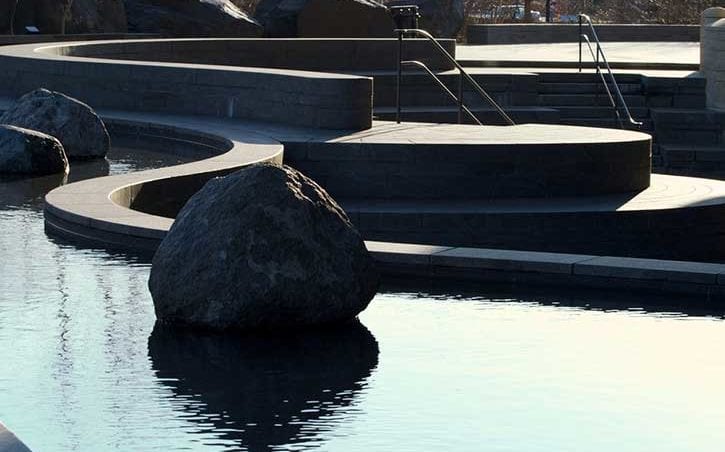Design One Bite at a Time – Basic Design Principles
Posted in Insights -

By: Chris Roy, Director of Creative Design, OTL, Inc.
Many of us have heard the saying, “How do you eat an elephant? One bite at a time!”
The adage applies to design in general and definitely applies to the design work at OTL. There’s the obvious interpretation of churning through the physical steps required as part of the design and engineering process (one bite at a time), but the relationship between the saying and the design process is really about fundamentals, and the real insight should be thought of in terms of reductio ad absurdum (Latin for “reduction to absurdity”).
Clearly the thought of eating an elephant – if one were so inclined – “one bite at a time” is simplified to an absurd level. What about all the logistics of such an endeavor? Is it cooked? Raw? How do you preserve against spoilage? What about all the inedible parts? Those questions are like the engineering side of the design process – all very important, and smart people are going to have to figure them out.
The most important part of the “one bite at a time” adage is that it removes all the extraneous processes and details and focuses on fundamentals. This is the key to design. Good design and great design are built upon the fundamentals, basic design principals.
” Chris Roy, Director of Creative Design for OTL.
In architecture and landscape architecture – the design of places and spaces for people and activities – the fundamental starting point is understanding the programming. Get that wrong, and it’s hard for the project to be successful. What good is a beautiful building or park that nobody uses?
Whether to include water features and what type of water features are part of these fundamental questions, as there is a strong reciprocal relationship between people and place and how a fountain can enhance the dynamic. This certainly isn’t restricted to water features; this applies to every element that goes into creating a project.
Once the fundamentals are defined, and the programmatic elements are identified, the design process revolves around integrating disparate elements into a contiguous and harmonious whole. This process in general, and design of the individual components in particular, really start with a series of Basic Design Principles – the extreme simplification alluded to above. Just as the successful design of places requires getting the programming right, the design of exceptional things relies on getting the basic underlying principles right; it doesn’t matter if the ‘thing’ is small, like a pen or a phone, or big, like a fountain, a building, or a park.
These Basic Design Principles are the fundamental elements of Art and are relevant across all design disciplines: illustration, painting, sculpture, graphic design, architecture, landscape design, water design, lighting design, et cetera.
These fundamentals start with several Basic Elements:
Line – the basis of shape and direction
Shape/Form – Geometric, organic, thick, narrow, etc.
Space – Negative space and/or open space are just as important as objects and things within a space
Color – Often discussed in terms of ‘color theory’, color must also be thought of in terms of mood and cultural interpretation and significance
Texture – Affects one’s sense of touch on a surface, how a surface can be/will be used, and the interplay of light on a surface
These Basic Elements are the building blocks, and can be combined utilizing several Basic Design Principles:
Hierarchy – Emphasis ensuring that the most important concept has the most visual weight. The design should be able to focus the viewer’s attention on these elements first
Contrast – Use of design elements that are in opposition to one another. Contrast helps emphasize key elements, reinforcing hierarchy
Alignment – Ensures that elements have a pleasing connection with one another
Scale/Proportion – Ensuring that parts relate well to each other
Repetition – Creates rhythm and pattern
Proximity – Creates a sense of organization by grouping similar and/or related elements
Balance – Creates form and stability in an overall composition; balance can be symmetrical or asymmetrical.
When we reduce our design process down to the basics, these are the elements with which we are working. These are the elements that drive everything else in the process.
When people think of designing something like a water feature, it’s all too common to start thinking about the technical details – pumps, waterproofing, tile finishes, sanitation – and to lose sight of the basics. The “one bite at a time” idiom was described above as reductio ad absurdum, however, when it comes to design, reduction to fundamentals and basic principles is anything but absurd; this is the basis for creating great spaces and places.
 Chris Roy is the Director of Creative Design for Outside the Lines, Inc. In this role, he leads the company’s design efforts, working with developers, architects, and landscape architects, as well as engineers and vendors. Contact him at ChrisR@otl-inc.com.
Chris Roy is the Director of Creative Design for Outside the Lines, Inc. In this role, he leads the company’s design efforts, working with developers, architects, and landscape architects, as well as engineers and vendors. Contact him at ChrisR@otl-inc.com.